-
×
 Playful Paradise
1 × EGP775.00
Playful Paradise
1 × EGP775.00
Hijab Articles
Can You Show Hair When Wearing a Hijab?
Can you show hair when wearing a hijab? You believe that if you’re covering most of your hair, there’s no harm in revealing some of your hair at the front, right?
Well, that’s a huge no!
A hijabi must cover all her hair, even the hair at the front of her head that may appear underneath the veil. You’re obliged to cover all your hair while wearing a hijab, so you should look for the best style that helps you achieve that. You should also cover your neck and any skin that shows aside from your face and hands.
Here, we’ll discuss what you can and can’t show while wearing a hijab, and we’ll tell you how to wrap your veil to hide all your hair!
Can You Show Hair When Wearing a Hijab?

No, you can’t show any hair when wearing a hijab. The main purpose of wearing a hijab is to hide your beauty from intrusive gazes, and that includes both your hair and skin. So, you can’t show hair when wearing a hijab.
If you do so, your hijab won’t be entirely correct according to Islamic rulings.
Can You Show Your Neck When Wearing a Hijab?
No, you can’t show your neck when wearing a hijab. It’s one of the parts that must be hidden. In fact, all your body parts should be covered with the exception of your hands and face because those are supposedly impossible to cover.
So, even though turbans are heavily in style and trending everywhere, they aren’t the correct form of hijab because they reveal your neck. It’s generally better to stick to hijab styles that cover your hair and neck. Or, if you want to wear a turban, make sure to at least wear clothes that hide your neck, like a turtle-neck sweater.
Can You Show Skin When Wearing a Hijab?
The only skin you can show while wearing a hijab is the skin of your face and hands. Other than that, you shouldn’t show any skin on your neck, arms, legs, etc.
The rulings of Islam are clear when it comes to hijab and the coverage that comes with it. Allah Almighty said:
“O Prophet! Tell your wives and your daughters and the women of the believers to draw their cloaks all over their bodies. That will be better, that they should be known so as not to be annoyed. And Allah is Ever Oft-Forgiving, Most Merciful.”
You can see that there’s not much room for guesswork when it comes to hijab. Allah commanded that Muslim women cover their bodies, as well as their hair.
The Rules of Wearing a Hijab
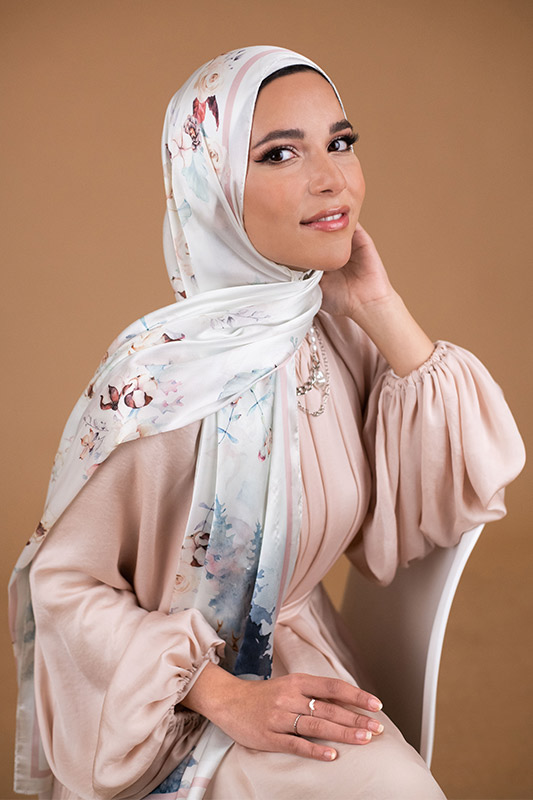
According to Islamic rules, Muslim women should cover their entire body, refrain from wearing adornments, and refrain from wearing perfume when engaging with non-mahrams. They should also wear loose clothes that don’t show the details of their bodies.
A hijab should be thick or opaque enough to cover what’s underneath it, which includes the hair, neck, and in some cases, the chest. It should be modest and subtle, not too bright or attractive that it attracts men’s eyes.
On top of that, it shouldn’t look like men’s clothing, nor should it look like what disbelieving women wear.
Despite all that, these rules aren’t only limited to hijabis. All Muslim women should wear loose clothing and refrain from wearing adornments and perfume, even the ones not wearing a hijab.
Recommended: Our favorite online hijab stores and brands in the USA this year
How to Wrap a Hijab to Avoid Showing Your Hair
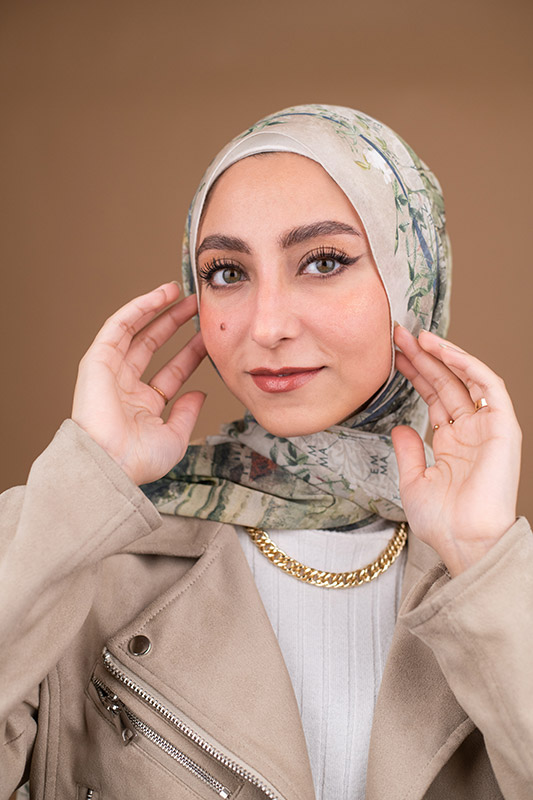
We understand that some hijab styles are loose, so they may cause your hair to show. Here, we’ll show you two different ways to wrap your hijab without showing any hair.
Classic Wrap
The classic wrap is a no-fuss hijab style that you can wear everywhere on any outfit. It’s a timeless look that never goes out of style, and the best part is, it’s pretty easy to wrap. Here’s how to wrap it:
- Lay the scarf out and put it over your head, so one side is longer than its counterpart. The longer side will wrap around your head and reach the other side, so you need to make sure it’s long enough for that.
- Pin the two sides of the hijab under your chin with regular pins. Or, if you’re afraid of poking holes through your hijab and ruining it, you can use magnetic pins. While doing this, make sure the hijab isn’t loose on your forehead, so it doesn’t show any hair.
- Grap the longer side you left earlier and wrap it around your head, draping it over your shoulder.
- Spread both sides out, so they cover your neck and chest.
Recommended: how to wear a hijab without pins
Loose Style
Loose hijabs have been in style for a while now, and everyone is coming up with new ways every day to wrap a loose hijab.
When attempting this style, make sure to choose a soft material, like chiffon or modal. Otherwise, it won’t give you the loose look you’re aiming for.
Here’s how to follow the trend and wrap a loose hijab without showing your hair:
- Wear an undercap, making sure to let it cover the top of your forehead to prevent any hair from showing.
- Put the veil on your head, keeping both sides at equal lengths on your chest
- Pin both sides under your chin using regular pins or magnetic pins
- Grab the right side and toss it over your left shoulder, letting it drape down your back.
- Pull this side tightly around your neck, and you can secure it to your clothes using a pin
- Either leave the other side as it is or drape it over the other shoulder to create a symmetrical look
Say goodbye to hijab fashion dilemmas! Elevate your style effortlessly with our latest elegant hijab collections. Whether it’s sophistication or modern flair you seek, we’ve got the perfect solution for your upcoming event.
Next Step: Upgrading Your Wardrobe to Fit Your New Standard for Hijab!
Wait a minute! Now that you know the correct way of wearing the hijab, it’s time to upgrade your wardrobe to fit your new standards for the hijab. Here are some of EMMA’s top picks:
Turath in Modal
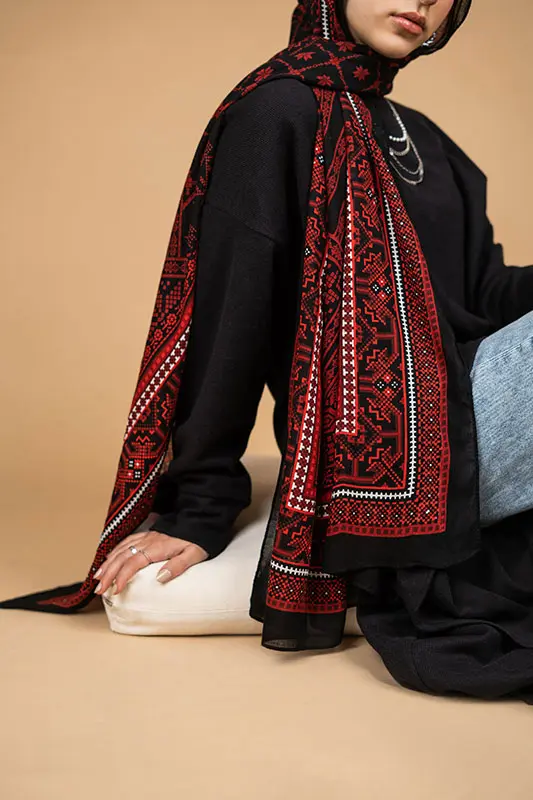
If you love pieces with meaning, Turath in Modal is for you! This scarf brings together the iconic colors of red, white, and black in a design that’s both fresh and grounded in heritage. EMMA’s soft modal fabric makes it a joy to wear, flowing smoothly over any outfit—whether casual or formal. Turath in Modal lets you add a touch of tradition to your style with a flair that feels totally effortless.
Persian Queen
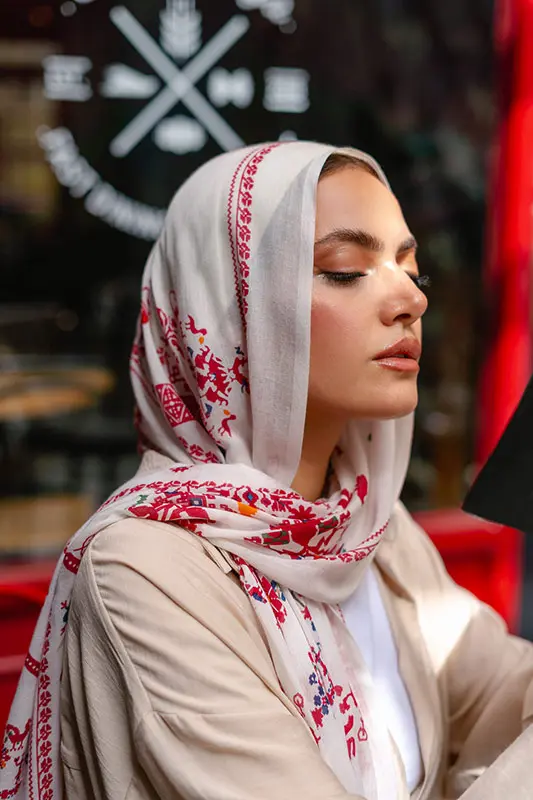
Add a touch of Persian royalty to your wardrobe with Persian Queen. This scarf is more than just an accessory—it’s a statement, made with care from EMMA’s ultra-soft modal fabric that effortlessly drapes over your shoulders. The design is a lively mix of cream, red, green, orange, and blue, making it as versatile as it is eye-catching. Slip it on, and you’ll feel like you’re wearing a piece of art that’s ready to elevate any outfit.
Siwa
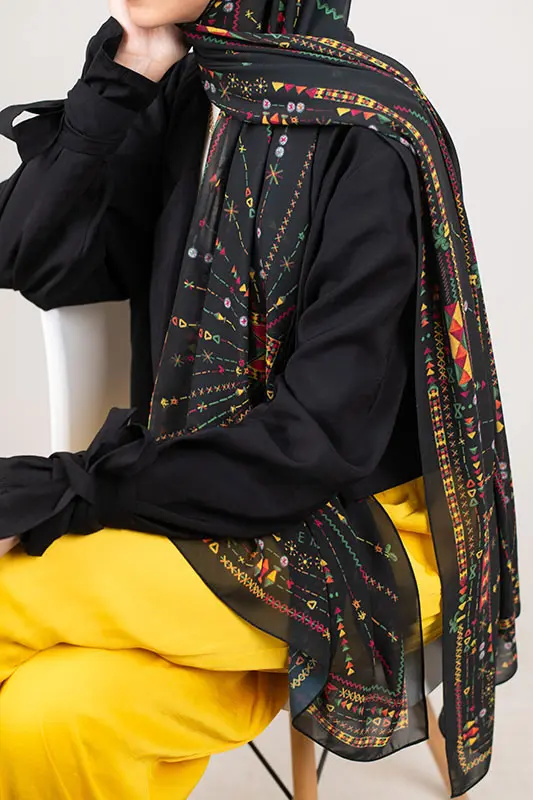
Step into the heart of Egypt with Siwa! Inspired by the Siwan oasis, this scarf portrays the essence of desert beauty and tradition. Its rich colors and Siwan-inspired embroidery against a sleek black canvas bring a bold look that makes a statement all on its own. Wrap yourself in Siwa, and it’s like you’re journeying through the Great Sand Sea, basking in the warmth and history of Egypt.
The Final Verdict
So, can you show hair when wearing a hijab? No, you shouldn’t show any hair while wearing a hijab, nor should you show your neck or any skin other than your face and hands.
To wear a hijab, you need to wear your clothes modestly, making sure they’re loose enough not to show your body’s details.

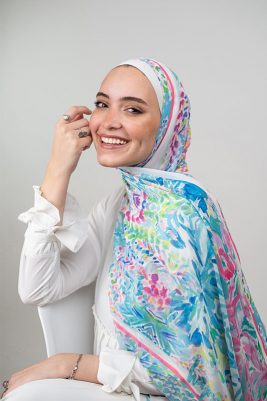 Playful Paradise
Playful Paradise 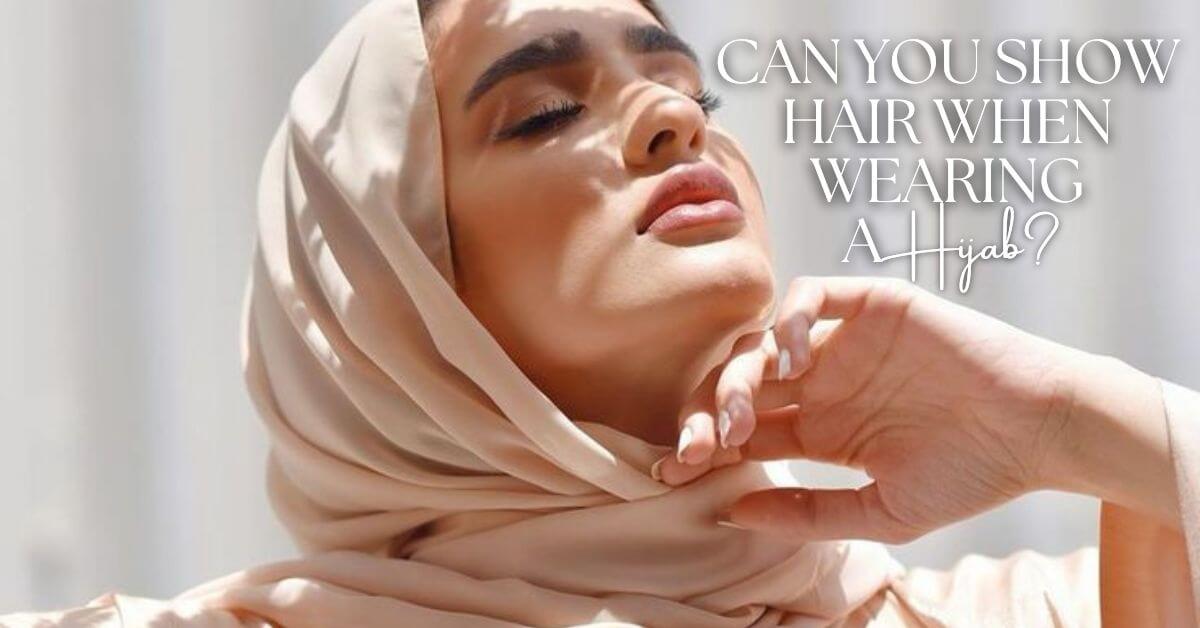
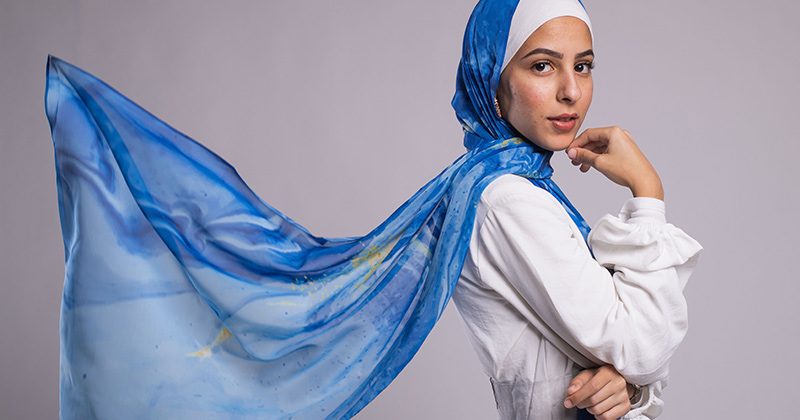
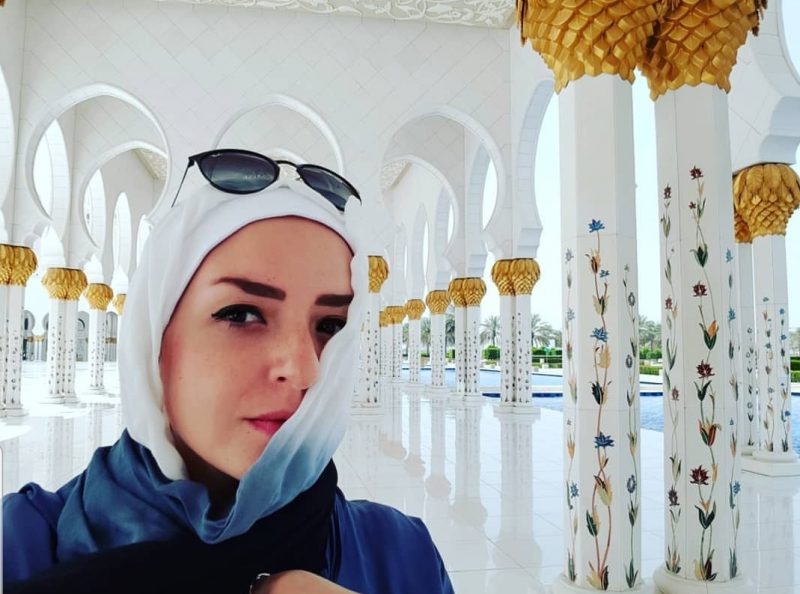

Jazakallah. This article provides clear guidelines on the importance of fully covering hair and skin when wearing a hijab, emphasizing adherence to Islamic rulings. It offers practical tips on hijab styles to ensure modesty is maintained while following fashion trends, serving as a helpful resource for Muslim women navigating hijab fashion and religious obligations.
Is it truly modest to only partially cover your hair while wearing a hijab, or does true modesty require full coverage at all times? How do cultural norms and personal interpretations play a role in this decision?”,
“refusal
Hijab is to cover your hair entirely, but if you don’t then cover as much as you can for modesty. Culture does have an impact on how people practice their faith. Sometimes even going against its rulings and core concepts. We have to learn how to differentiate between them.